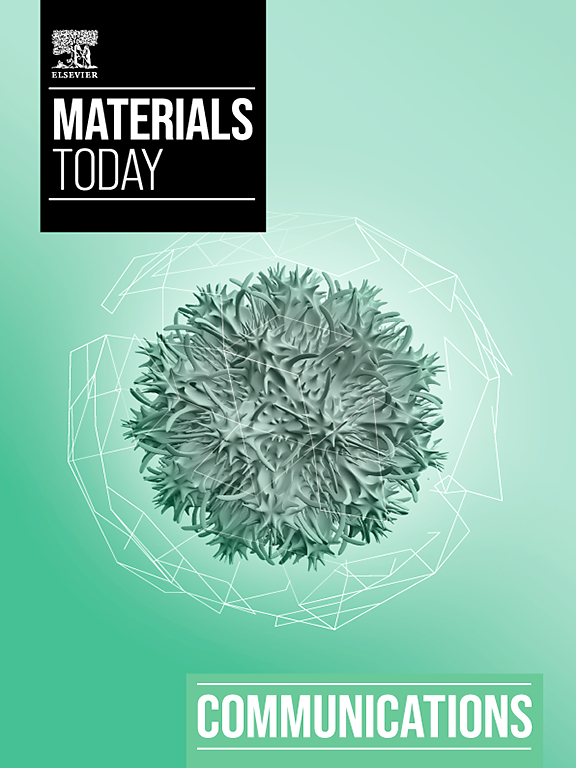Preliminarily exploration of the minimum structural unit of amorphous aluminosilicate glass by cluster-plus-glue-atom model
IF 4.5
3区 材料科学
Q2 MATERIALS SCIENCE, MULTIDISCIPLINARY
引用次数: 0
Abstract
The research and development of next generation amorphous aluminosilicate glass is hampered by the absence of reasonable minimum structural unit model, which should display more satisfactory mechanical strength and better production process compatibility. In this report, the minimum structural unit of Corning gorilla series of amorphous aluminosilicate glass is explored by the cluster-plus-glue-atom (CPGA) model, preliminarily. Taking typical -tridymite () as the parent phase material, the cluster formula (CF) and unit cluster of are established as [Si-O]Si and [(CF)-(CF)](CF). The metal cations (MC, 2≤≤5 and ≠4) are the network former, which are introduced into [Si-O]MC structure. Besides, MC is also introduced into the amorphous aluminosilicate glass as network external, which keeps the sum valence of MC and MC as 4. In case of Corning gorilla series of amorphous aluminosilicate glass, the composition is firstly measured by Special Glass Key Laboratory of Hainan Province. Then, the unit clusters of Corning gorilla series of amorphous aluminosilicate glass are analyzed by CPGA model. The results reveal that the development trend mainly depends on the improvement of MC content, which is gradually improved from 4 to 10. Besides, CPGA unit clusters results of six generations amorphous aluminosilicate glass correspond well with the measurement results, which reflect the rationality of CPGA model. Based on CPGA unit cluster [(CF)-(CF)](CF), the upper limit of MC content for amorphous aluminosilicate glass is 12. So, CPGA unit clusters for next generation of amorphous aluminosilicate glass are designed, which could further improve MC content from 10 to 11. With the guidance of CPGA model, the amorphous aluminosilicate glass enterprise, as well as other kinds of glass enterprise, could avoid the huge research and development costs, as well long research and development time.用团簇加胶合原子模型初探无定形铝硅酸盐玻璃的最小结构单元
由于缺乏合理的最小结构单元模型,下一代非晶态铝硅酸盐玻璃的研究和开发受到了阻碍,而最小结构单元模型应能显示出更令人满意的机械强度和更好的生产工艺兼容性。本报告通过团簇加胶合原子(CPGA)模型初步探讨了康宁大猩猩系列非晶态铝硅酸盐玻璃的最小结构单元。以典型的菱锰矿()为母相材料,确定其团簇式(CF)和单位团簇为[Si-O]Si 和[(CF)-(CF)](CF)。金属阳离子(MC,2≤≤5 和 ≠4)是网络前体,被引入到 [Si-O]MC 结构中。康宁大猩猩系列非晶态铝硅酸盐玻璃的成分首先由海南省特种玻璃重点实验室进行测定。然后,利用 CPGA 模型对康宁大猩猩系列非晶态铝硅酸盐玻璃的单元团簇进行分析。结果表明,其发展趋势主要取决于 MC 含量的提高,MC 含量从 4 逐步提高到 10。此外,六代无定形铝硅酸盐玻璃的 CPGA 单元簇结果与测量结果吻合,反映了 CPGA 模型的合理性。根据 CPGA 单元群[(CF)-(CF)](CF),非晶态铝硅酸盐玻璃的 MC 含量上限为 12。因此,为下一代非晶铝硅酸盐玻璃设计的 CPGA 单元群可将 MC 含量从 10 进一步提高到 11。在 CPGA 模型的指导下,非晶铝硅酸盐玻璃企业以及其他类型的玻璃企业可以避免巨大的研发成本和漫长的研发时间。
本文章由计算机程序翻译,如有差异,请以英文原文为准。
求助全文
约1分钟内获得全文
求助全文
来源期刊

Materials Today Communications
Materials Science-General Materials Science
CiteScore
5.20
自引率
5.30%
发文量
1783
审稿时长
51 days
期刊介绍:
Materials Today Communications is a primary research journal covering all areas of materials science. The journal offers the materials community an innovative, efficient and flexible route for the publication of original research which has not found the right home on first submission.
 求助内容:
求助内容: 应助结果提醒方式:
应助结果提醒方式:


